Classic Wembley finals in the golden age of football
and live on Freeview channel 276
Decades before England’s Euro 2020 success, there was another gilded era for English football.
Massive crowds packed stadiums as fans regained their hunger for the game and flocked back to grounds after seven years without nationally organised professional football during the Second World War.
Advertisement
Hide AdAdvertisement
Hide AdFrom Blackpool’s two epic Cup Final appearances in 1948 and 1953 to England’s World Cup triumph in 1966, football was still in its Age of Innocence, before superstardom and eye-watering wages.
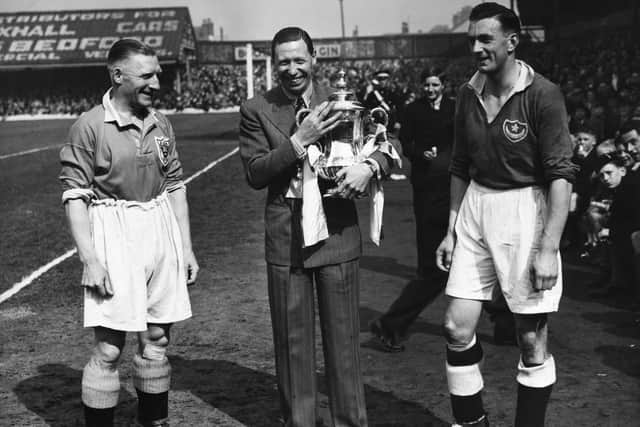

Players were part of the same community as those who watched them – and, thanks to the maximum wage, didn’t earn much more than them either.
Since then, the experience of watching live football has been transformed in a way that would have been unthinkable even 30 years ago. Few would dispute that the modern all-seater grounds, introduced after the Taylor report following the 1989 Hillsborough disaster, are safer, cleaner and more attractive than the old stadiums.
Wedged into your plastic seat, however, there’s sometimes a yearning for the ramshackle, quirky football grounds of old, with their terrace crush-barriers, rickety stands and tea bars serving half-time Bovril and pies.
Advertisement
Hide AdAdvertisement
Hide AdTactically, too, football is much more sophisticated than when players used to line up in a rigid 2–3–5 formation. No ‘false nines’ then!
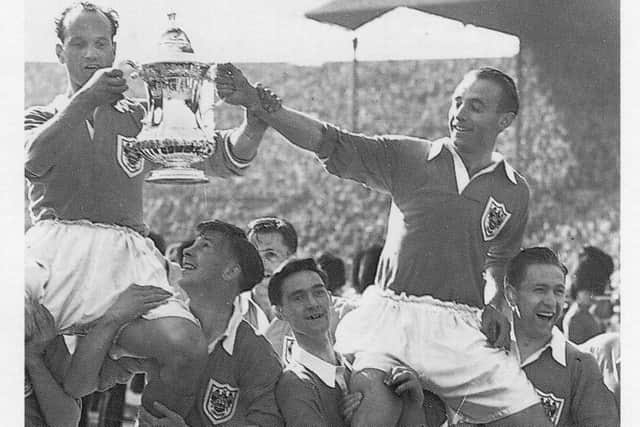

My book looks back to four of the most famous Wembley finals, and examines the social and cultural background of the era through a study of grounds and football programmes.
Rite of passage
I started watching football in the early 1960s at my home-town club, Warrington Town, who played in the Mid-Cheshire League and were managed by my stepdad Fred Worrall.
He was a former England international who had starred in unfancied Portsmouth’s remarkable 4–1 victory over the mighty Wolves in the last pre-war Cup Final in 1939, which is featured in the book. He also played for Blackpool in the wartime leagues.
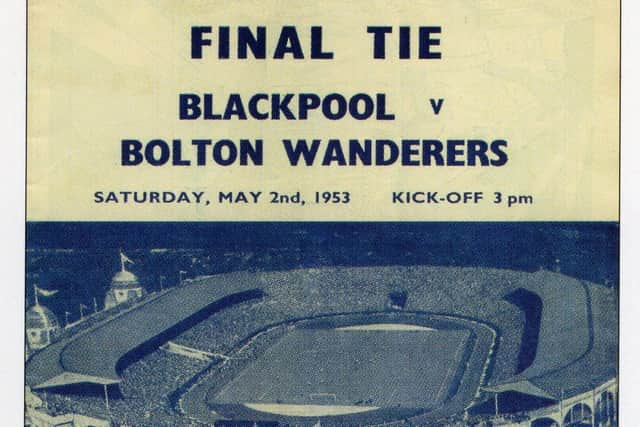

Advertisement
Hide AdAdvertisement
Hide AdTown’s little Loushers Lane ground stood in the substantial shadow of the huge cantilever bridge across the Manchester Ship Canal, and there was the surreal spectacle of ocean-going cargo liners sailing past the pitch.
My “promotion” from non-League to professional football couldn’t have been more dramatic.
At Warrington my dad had discovered a young Roger Hunt – “Sir Roger” to the Kop, who sadly died in September.
He went on to be one of the stars of England’s 1966 World Cup triumph, alongside Blackpool’s Alan Ball (the squad also included Blackpool’s Jimmy Armfield), and we went to Anfield every fortnight to watch him hammer in the goals for Liverpool.
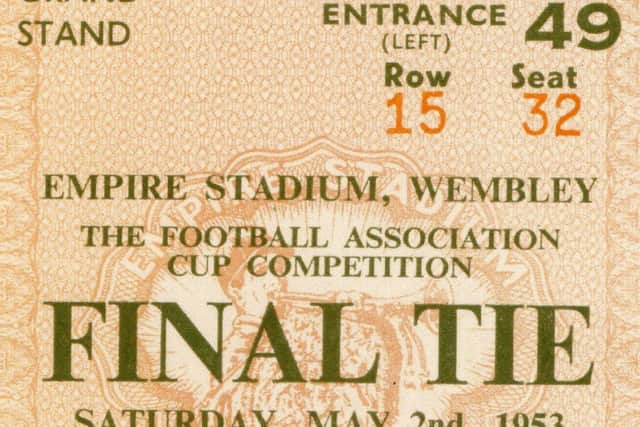

Advertisement
Hide AdAdvertisement
Hide AdRoger ensured we always had good seats in the stand, but as a teenager I was fascinated by the maelstrom of the Kop and decided to give it a go myself. At first it was in the “boys’ pen”, a sort of cage for apprentice Koppites at the back of the terrace. From there I graduated to the Kop proper, and proudly joined the throng as we displayed our sea of red scarves held aloft.
It was a remarkable experience to be part of a swirling 30,000-strong tide of humanity, so tightly packed together that you move almost as a single organism.
You were jammed in so tight, shoulder-to-shoulder, that moving to another part of the stand was impossible.
Youngsters who found it too much for them were passed down over the heads of the spectators, like crowd-surfers at a pop concert, to the waiting St John’s ambulancemen at the front.
Back to Blackpool…
Advertisement
Hide AdAdvertisement
Hide AdBut my summer holidays were always spent in Blackpool, where we had relatives, which meant an early-season visit to Bloomfield Road to see the Seasiders towards the end of their time in the old First Division.
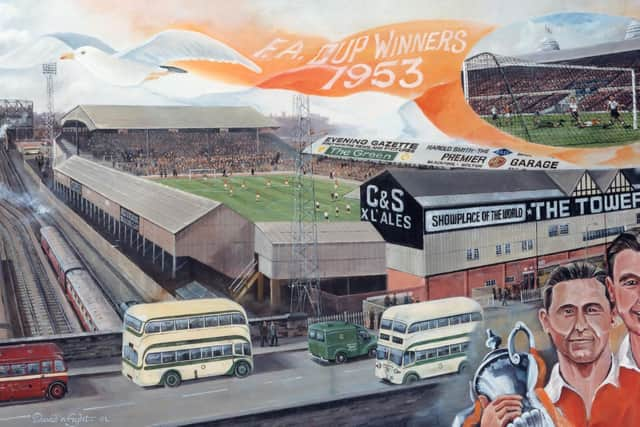

After a move to work for the Gazette in 1980, I got used to the increasingly decrepit Bloomfield Road, with its quirky old wooden stands, now completely swept away for the smart new stadium.
The stands at old football grounds often had curious names or nicknames.
I used to watch Blackpool from what was officially the East Paddock but was known to all-comers as the Scratching Shed (an ironic reference to insect infestation?).
Advertisement
Hide AdAdvertisement
Hide AdSeagull droppings spattered the crumbling terraces, and the toilets – as at most old-fashioned grounds – were medieval. On the corrugated iron roof was a peeling advertising slogan for The Green, the Gazette’s Saturday late results edition, and for ‘Oh Be Joyful’ ale.
The South Stand, with its twin mock-Tudor gables, contained the changing rooms and club offices, and advertised the Tower to incoming holidaymakers.
The tiny South-West stand, wedged cosily between the South and West stands, was a delightful oddity which sadly I never got to sit in.
Blackpool had its own imposing Spion Kop with a 16,000 capacity, which in later years was stripped of its massive echoing roof and reduced to a sad, weed-strewn, fenced-off embarrassment, but the views from the top had been incredible. It was later used exclusively for away supporters.
Advertisement
Hide AdAdvertisement
Hide AdThe West Stand stood right alongside the miles of railway sidings in which hundreds of holiday-train carriages were stabled, and from the west side of the Kop you could even combine football-watching with trainspotting until Central Station was closed in 1964.
Football full-houses
In the heyday of terraced grounds, some matches attracted extraordinary crowds.
And the official crowd figures may have been significant under-estimates, as football stadiums weren’t as impenetrable as they are now and turnstiles weren’t as efficient as modern digital systems.
The introduction of all-seater stadiums increased safety but of course reduced capacity.
Advertisement
Hide AdAdvertisement
Hide AdIn 1934, 84,569 turned up at Maine Road when Manchester City played Stoke City in the FA Cup sixth round.
There were also 80,000-plus attendances at Stamford Bridge when Chelsea took on Arsenal in the League in 1935 and for Manchester United’s ‘home’ League game against Arsenal in 1948; the latter was actually held at Maine Road while Old Trafford was being rebuilt after wartime bomb damage.
Inevitably, but tragically, these massive attendances brought with them the capacity for catastrophe. In March 1946 when Stanley Matthews’s Stoke City visited Burden Park for a sixth-round FA Cup tie against Bolton Wanderers, the official attendance figure was shown as 65,419 but in fact probably more than 85,000 fans had been shoehorned into a ground that was still not fully open.
Part of it was being used to store stockpiled food that was still being rationed after the war.
Advertisement
Hide AdAdvertisement
Hide AdWhen the crowd surged forward on the overcrowded embankment, two metal crush-barriers were broken; 33 supporters were killed and another 400 injured. Incredibly, the referee insisted that the game continue.
It was a source of great sorrow to the players of both teams that the lessons of Burnden were never really learned and that fans continued to be crammed into grounds of largely Victorian design.
It would be 43 more years before Hillsborough changed all that…
n Football’s Golden Decades: Four of Wembley’s Finest
Finals is published by YouCaxton
Publications at £9.99 (ISBN 978-1913425982). Website: www.youcaxton.co.uk/footballs-golden-decadesbarry-mcloughlin/ or email: [email protected].
Next week: The view from the terraces.
Comment Guidelines
National World encourages reader discussion on our stories. User feedback, insights and back-and-forth exchanges add a rich layer of context to reporting. Please review our Community Guidelines before commenting.